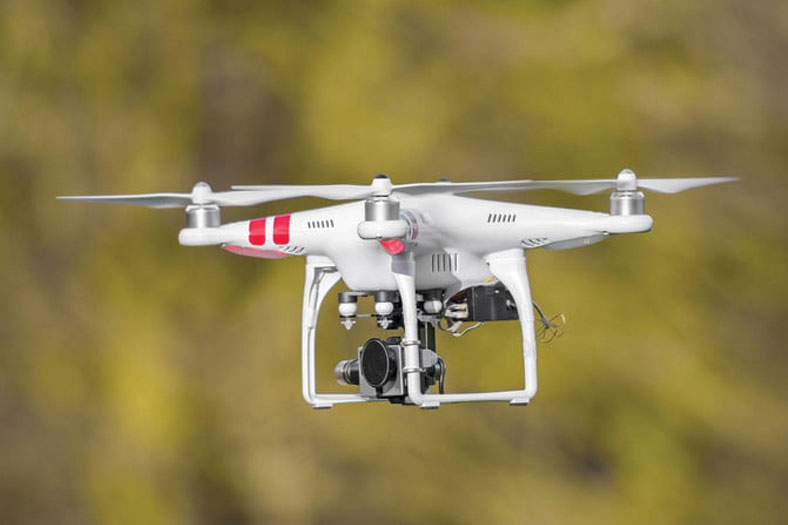Connecting Smart Manufacturing
August 14, 2017 3:23 pm
Marc Jarrault, Managing Director, Lapp India elucidates the role of cable and connection technology in the era of smart factories.
Mass adoption of digitisation across economies and societies has led to emergence of Industry 4.0. In the course of Industry 4.0, the demands on cable and connection technology will also change. Data rates will climb with the consistent networking of company and business processes, a development that demands high-performance networks. In future, network cables will no longer only be used to connect machinery and within control cabinets, they will also be laid directly to intelligent actuators or sensors in the field. The solution lies in system-specific field-compatible Ethernet cables and robust connectors. Industry 4.0 creates what has been called a ‘smart factory’. Smart Factories enables a business to be more plugged in to the Industrial Internet of Things. This allows a business to look for ways to identify, isolate and prioritise the predictable and repeatable components of processes. Flexibility and one-off production are the main aims of Industry 4.0, enabling companies to achieve resource efficient and ergonomic production, with dynamic integration of their customers and business partners into the value chain. The technological basis for this vision is the Internet of Things. It links cyber-physical systems, i.e., intelligent objects with embedded hardware and software, in a global network. The phenomenon is set to become increasingly important for industrial production in the coming years.
Trends and requirements born out of the Industry 4.0 revolution also influence the connectivity level of a machine or system. In Industry 4.0, development and production processes become more flexible, more efficient and more customer-specific. As customers demand customised systems and higher flexibility, industrial automation components should reflect these demands. In the new industrial revolution, products are becoming ‘smarter’. Cables and connectors are currently being developed that enable machines and systems to become modular. With customer’s increasing demands that products be customised and production be flexible, cables and connectors have to make these machine requirements a reality. Efficiency of cable and connectors is key to the productivity of the future of the industrial sector.
Essentially, in a truly smart factory, the manufacturing process becomes transparent from A to Z, and this transparency goes beyond the factory floor to the supply chain to the delivery process and stretches out to the user experience. Reliable networking of production across all levels is only possible with a comprehensive cabling and connection concept. Ethernet cables in a production environment must be substantially more robust than LAN cables in an office environment. It is an enormous challenge to combine the requirements of flexibility, robustness and the highest data rates. In addition, it must also be possible to install network connectors in the field without special tools.
This represents a turning point that offers enormous opportunities and at the same time confronts the sector with enormous challenges. It is only with consistent, interdisciplinary collaboration of all involved participants from industrial machinery, electrical engineering, automation and information technology that uniform, ground-breaking standards can be created and the future can be shaped. Component, system and solution providers must all change the way they think. The solution lies in system-specific field-compatible Ethernet cables and robust connectors.
Lapp Group, being one of the world’s leading suppliers of integrated solutions and branded products for cable and connection technology, is already helping in shaping smart factory initiative by meeting the challenges of the current era. The company is actively re-thinking and re-defining the cable and connection technology to meet the challenges of the smart factory of the future. As a step towards this initiative, Lapp has developed highly flexible ETHERLINE FD Cat. 6A.These cables can transmit highest data rates with consistent reliability in drag chains that are under constant movement with a data rate of 10 Gbit/s. The company recommends using Cat 6A cables with M12 connectors where water-tightness and dirt resistance in accordance with IP67 are required. Also useful for data transmission are Lapp’s HITRONIC fibre optic cables that are designed to transfer large volumes of data. Communications via fibre optics are fast, efficient, and secure. Not even electromagnetic interference can affect HITRONIC fibre optic cable. The HITRONIC range is an ideal solution for robots which need high frequency data to be transmitted.
Lapp also offers space-saving yet robust solutions such as the 30 per cent thinner ETHERLINE EC, suitable for use at sensor level which allows the tightest bending radii. Thanks to the robust PUR outer sheath, the cable can also be used with high mechanical stresses or in oily environments. Another extension to the ETHERLINE products is the robust 4-wire Cat. 5e Ethernet cables. These are also available as finished products with a pointed, space-saving M8 connector that is substantially smaller than the M12 connector, commonly used with Industrial Ethernet. Building on this innovation, Lapp will be launching ETHERLINE ACCESS, the managed and unmanaged switches at the Automation Expo’17. The switches along with data cables and connectors form Lapp’s offering for the industrial network solutions to ensure reliable connectivity for the smart factories of the future.
Lapp product portfolio is also adapting more and more to the requirements of the industry challenges. As a competent partner in the realisation of future-oriented networks, the company has greatly extended its cabling and connection technology range for Industrial Ethernet and fibre optic cables so that they can supply the market of the future with ground-breaking solutions. In the sense of ‘plug and produce’, in an ideal scenario the machine modules will manage with one single connector. In future, they will have a much more modular design so that the machinery and plants of tomorrow can be retrofitted in a more flexible manner.
Authored by:
Marc Jarrault,
Managing Director, Lapp India Pvt Ltd
Cookie Consent
We use cookies to personalize your experience. By continuing to visit this website you agree to our Terms & Conditions, Privacy Policy and Cookie Policy.

















 English
English Hindi
Hindi